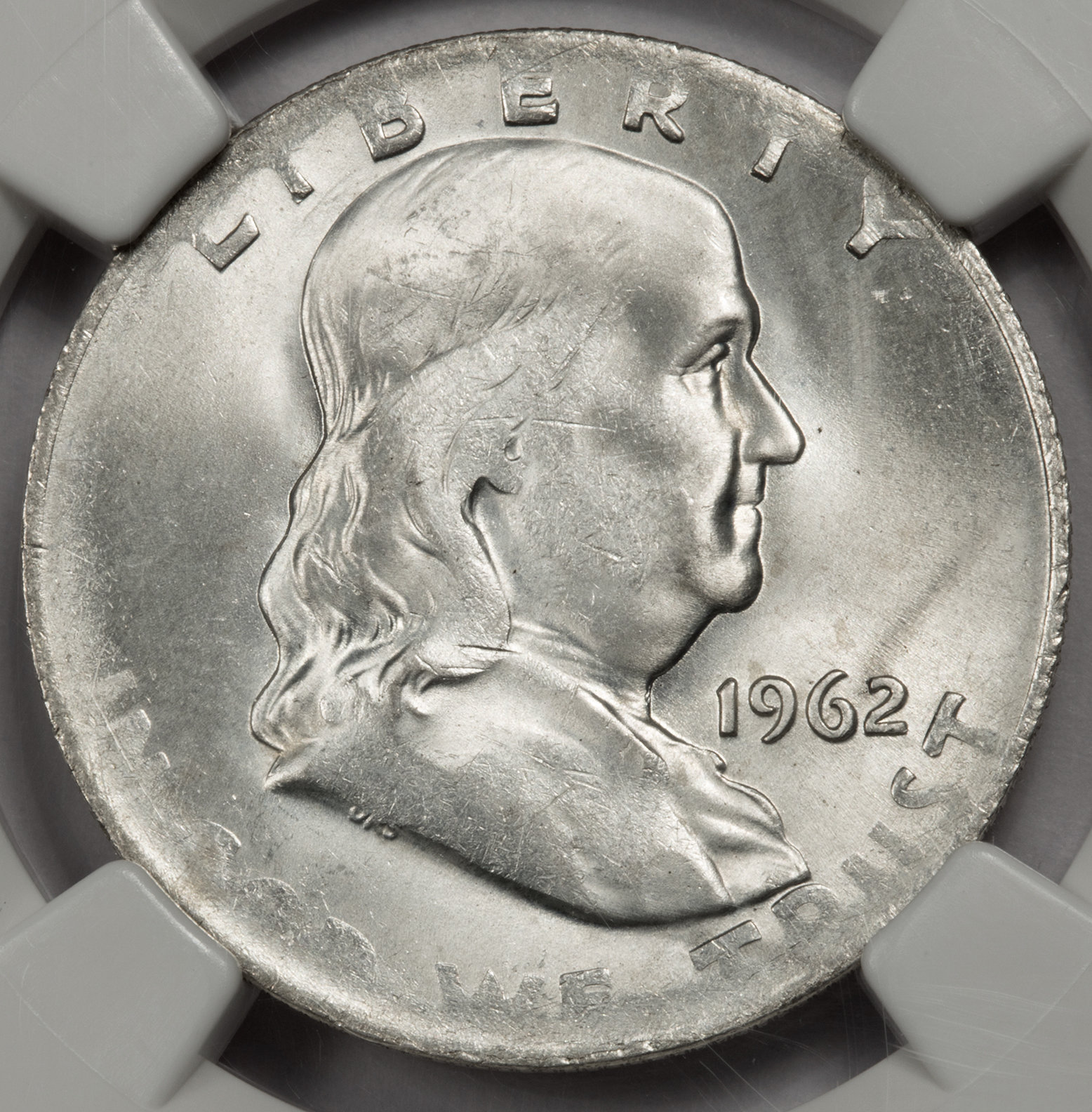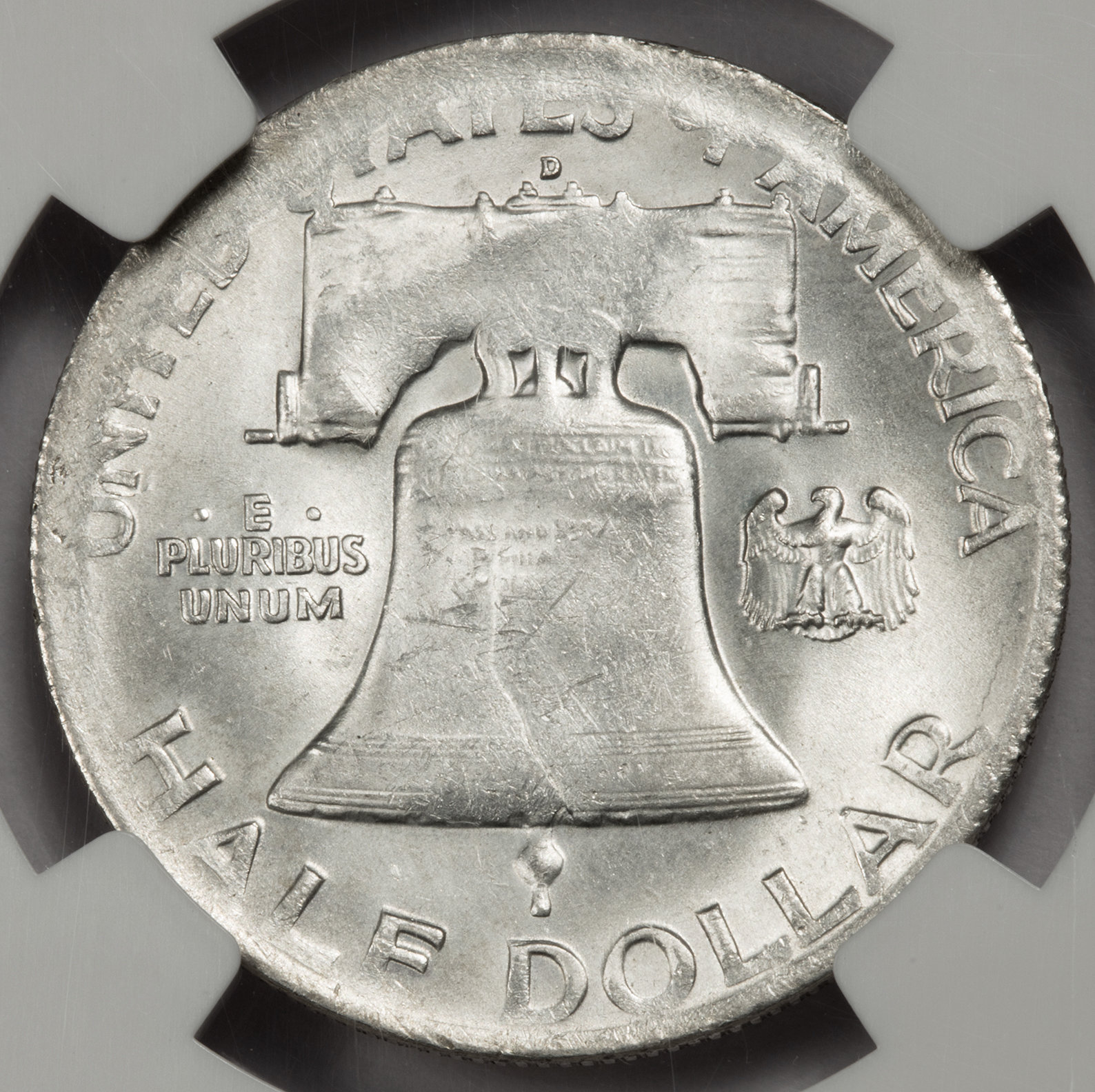Options
Numismatic Math Question
 ctf_error_coins
Posts: 15,433 ✭✭✭✭✭
ctf_error_coins
Posts: 15,433 ✭✭✭✭✭
If a silver half dollar was struck on silver quarter stock (punched half dollar size), then what would it weigh?


2
Comments
Same as a silver quarter planchet.
Sorry I misread the question. How could it get struck from quarter stock ?
6.3g
Unless...
Half is 30mm at 12.5 g
Quarter is 24.3mm at 6.3g
CaptHenway brought up a good point in calculating area of a circle (see below).
Area of quarter: 3.14 * 12.15mm^2 = 463.53mm^2
Area of half: 3.14 * 15mm^2 = 796.5mm^2
Then, 6.3g / 463.53 mm^2 = 0.014g/mm^2 is the density of a quarter on a quarter planchet.
Using a quarter planchet but increasing the diameter to that of a half at 30mm, then 0.014g/mm^2 * 706.5mm^2 = 9.891g
=====
The other calculation.
There are 6.3g / 24.3 mm = 0.259g/mm, quarter sized
0.259g/mm * 30mm = 7.78g, half sized
Here is how to do the math.
Calculate the area of a quarter. The formula is "pi times the radius squared."
Calculate the area of a half.
Divide the area of the quarter into the area of the half. This will give you a number greater than 1, which will tell you that the area of the half is that much times the area of the quarter. I'm not going to do the math for you, but let's say that answer is "1.357." (Note: that is a made up number.)
Multiply that number times the weight of a normal silver quarter. Using the made up number that would be "1.357 x 6.25 grams = X."
The rolling mills make up coils of metal sheets rolled to specific thicknesses appropriate for only one denomination. They are stored in the rolling area for a while and then moved to a different area with blanking presses. The blanking presses have gang punches with multiple steel rods all of one diameter appropriate to only one denomination. The coils of metal are fed into a blanking press that pushes the rods down through the metal sheet, cutting blanks of a fixed thickness and diameter which mathematically should give you blanks of the proper weight. After each downstroke the rods pull up, the sheet advances, and the process is repeated.
If you mix up your coils and feed a coil of metal intended for quarters into a blanking mill set up to punch out half dollars, you will get blanks that are of the proper diameter for half dollars but are too thin. That is what this coin appears to be.
TD
thickness of a quarter divided by thickness of a half times the weight of a half.
Measured where? Rim or field or Type One planchet? My formula works.
This coin does not look like a struck on split planchet error.
Capt's math equation suggests it is not on quarter stock altho Hemi's 7.77 is darn close.
And I just recalculated using the area of circle.
Reposting original... above.
Using correct diameters of 24.26 mm for the quarter and 30.61 mm for the half, and the correct weight of 6.25 grams for the quarter, the theoretical weight of a half on silver quarter stock is 9.95 grams.
Using 17.91 mm for a dime, the theoretical weight for a half on silver dime stock is 7.30 grams.
Does not look like split planchet. Could be rolled thin or tapered thin stock. Let me check foreign coins struck that year.
No foreign coins or planchets made in Denver 1950-1966.
The sheet stock from which the planchets are punched since the relief areas of a coin result in non-uniform thickness of the coin. This might be a difficult figure to obtain unless one contacts the mint. If one has 2 planchets of equal composition and diameter and one is twice as thick as the other then it follows that the thicker one will be twice as heavy as the other. The thickness of a WLH is given as 1.8 mm with no info to how it was obtained, but most likely that of the planchet.
https://en.wikipedia.org/wiki/Walking_Liberty_half_dollar
I assume the diameters you cite are of the planchet as well.
Agreed.
But the label says "BEFORE STRIKE 7.9 GRAMS".
Question is, how could they possibly know the planchet weight before it was struck?
Instead, I suspect the 7.9 grams might be a calculated value based -- incorrectly -- on the circumference (πd) rather than the surface area (πd²).
6.25 grams x 30.61π ÷ 24.26π = 7.88 grams
Or maybe it's just a remarkable coincidence that 7.88 rounds to 7.9.
Successful BST transactions with forum members thebigeng, SPalladino, Zoidmeister, coin22lover, coinsarefun, jwitten, CommemKing.
Maybe they weighed it, knew the weight change during striking is zero and adjusted their measurement accordingly?
I am assuming that the label is trying to say "split planchet before strike" and they had to break it up because of line length, so they put the "before strike" part on the same line as the weight.
For this piece I just used coin diameters, but last year when I was doing this math for Fred Weinberg for a certain coin I wondered about the differences in diameters between Type One Blanks and struck coins and how it would affect my ratios.
I borrowed some Type One Blanks and Type Two Planchets from Fred and measured them. Unfortunately he did not have a Type One Blank Half Dollar I could measure so I am not yet ready to publish my findings, but FWIW the Type One Blank Quarter Dollar measured at 24.28 mm vs. the 24.26 mm I use for a finished coin. The upsetting mill reduces it enough to get it into the collar, but then it expands out again.
The difference between the Type One Blank and the finished coin is so small that I consider my math using finished coin sizes to be valid.
TD
Maybe a dumb question but why would type 1 quarter blanks be relevant in 1962?
The coin seems a little bit stronger in the upper right obverse and the corresponding lower right reverse. I am going to say "Tapered Thin" or "End of Planchet Strip" error.
TD
Yes, this seems to make the most sense. It is obviously not a struck on spit planchet error.